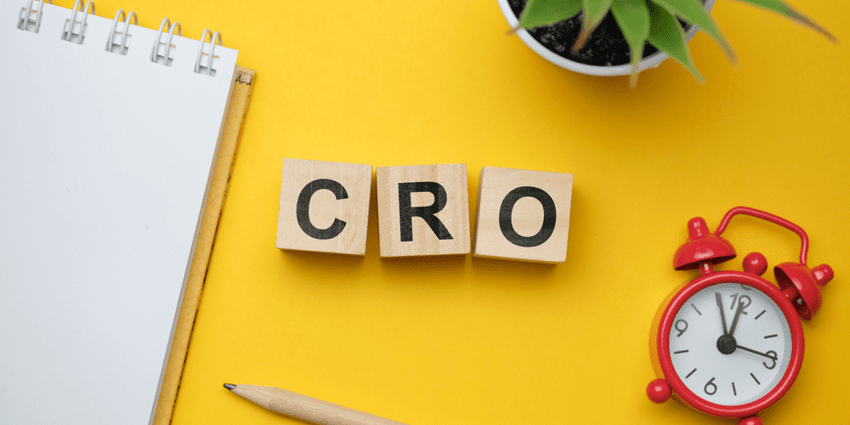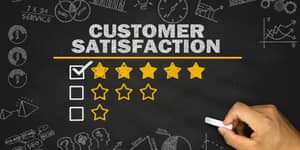When you're running an eCommerce business, conversions are critical to your success.
If you've landed on this page, you probably already know that. But with the chaotic nature of today's customer journey - where a customer today, might click on a social media ad, go to your store and leave, only to see a banner ad and return to purchase - it's even more imperative to optimize the entire journey, from start to finish. But with (literally) hundreds of tactics to optimise, as an eCommerce business, where do you start?
In this article, we will walk you through four key areas of an eCommerce site that you should improve on to increase your conversion rates.
What is the definition of an eCommerce conversion rate?
Before we get into the meat of the article, we need to define what conversion looks like. A conversion in your store means someone has saved an item to buy later, added an item to their shopping cart or made a purchase. It's the rate of how many people undertake an action on your website as a percentage of people who visit and see your website. The more optimized your marketing process, the higher your conversion rate will be.
Why is your eCommerce conversion rate important?
Taking the reins on your conversion rate gives you better control of how your customers interact with your website. There are three main reasons why conversion rate is so highly sought after:
- If your conversion rate rises, you get higher profits
- If your conversion rate rises, you'll draw more traffic to your store
- If your conversion rate rises, it allows you to lower your customer acquisition costs
There are lots of elements we could look at when it comes to optimising your customer's journey to purchase, so we've narrowed it down to four key areas that should be part of any store owners checklist. These areas are:
- Product pages
- Marketing content
- Shipping and delivery
- Customer service
Setup your product pages to convert
When it comes to eCommerce stores, you often see beautiful, slick home pages, but the moment we click on product pages, you're welcomed by low-res product imagery, poor descriptions and call-to-actions. There's an assumption amongst store owners that once a customer has reached the product page, they're more likely to convert, and therefore little sweat equity is needed to push them over the line. In case you didn't see where we were going with this, this is false.
Better product imagery, with video
People hardly buy anything without seeing it. Think about the last time you went into a store, pointed to something and purchased it. Never happens right? You want to be able to touch it, pick it up and (depending on what the product is) even smell it. With online stores, you can't do any of those things, so you have to think extra hard about how you can make your graphics and imagery come alive and paint a picture of the product that you're trying to sell.
This should go without saying, but too many websites try to sell goods with low-res imagery. You should always pick a default high resolution, full-sized image with multiple other images from alternate views and intricate details. A contextual lifestyle image should always be added to the end of your product carousel. Be sure to deep-etch these images with a white or light grey background, to minimise distractions. Stock photos should be avoided.
Studies have suggested that videos can increase product page conversion rates anywhere between 84-144%. This is because video adds another dimension to the online customer's experience. Similarly, a 360 degree view of your products can provide a substitute for not being able to pick up a product. This is usually accomplished by tracking different frames of a product, and there are plenty of third-party companies out there that offer this service.
Pro tip: A great way to get lifestyle images is from your customers. More often than not, they will have a phone with a decent camera in it, and can snap a few photos for your collection.
Upsell on your product pages
In 2006, Amazon reported that cross-selling and upselling contributed as much as 35% of their revenue. Upselling is when you sell a similar and more expensive product to an existing customer. These offers tend to perform better than cross-selling. Cross-selling is selling a different product of lesser value to an existing customer. Cross-selling performs better on checkout pages. An example of upselling is selling a customer a big mac meal instead of just a big mac.
When determining what you should upsell to your customers, you want to think of the bigger picture of a customer's life cycle. When choosing products to upsell, avoid suggesting products that increase the overall order value by 25%. You want to list products that are relatively similar to the purchased product, so as not to confuse a customer when purchasing. An example of this is Amazon's related product widget that appears on every product page.
Optimise your calls-to-action
Call-to-action buttons or (CTAs) are buttons on your website that encourage customers to click and convert. Some examples of common call-to-action buttons are:
- Add to cart buttons
- Download buttons
- Free trial buttons
Your call-to-action buttons, above all, should be actionable. Each button has a specific purpose, either to get a customer to create an account, download a piece of content or purchase a product. The best performing buttons feature first-person speech, with a green or orange colour. You would be surprised how much color matters when it comes to customer drop-off.
Pro-tip: Use clear call-to-action buttons to maneuver a customer toward a desired goal. That could be to add a product to cart or to read an article. Each of these pages will have their own call-to-action which will drive the customer further down the funnel.
Add reviews to your product pages for social proof
The reality is that people tend to trust peers more than companies, advertisers and marketers. This is because the latter are considered to be untrustworthy because they have an agenda - to sell you things. Peers, on the other hand, are more likely to be objective when it comes to reviewing products, and therefore, their opinions are held in high regard. The goal of social proofing your website, is to help potential customers with their decision making. By letting them know that their peers have endorsed a product, you are alleviating their purchase anxiety. Social proof can come in many forms, you can implement reviews, social media posts and expert recommendations.
Write content that helps your audience
While content marketing and conversion rate optimization are different concepts, they share the same objective, more or less. If you think about it, your content bolsters and supports conversion. They work in tandem to filter customers through your marketing funnel, all the way to purchase. You can use traditional content marketing concepts like blogging and social media for the upper funnel, to attract visitors and fine-tune content on landing pages to increase the conversion rate.
Develop helpful buying guides
Buying Guides are a common search engine optimisation tactic, particularly amongst eCommerce sites. They're popular because they tick many of the boxes for effective on-page SEO, and they're a great research resource for early information gathering before purchase. If you can provide great advice and expert knowledge in these guides, it gives your store an advantage over your competitors. Think about it this way, when was the last time you bought a product without doing any research. Never, right?
Typical information you might include in a buying guide is:
- Characteristics of a particular product or product category
- Features to look out for particular buyers and lifestyle purchases
- Recommendations in a product category
Use an abandoned cart email as a recovery tool
If you are getting a lot of abandoned carts, you can send an email to the customer in question to increase your store conversion rates. There are six best practices when it comes to crafting your abandoned cart email:
- Segment your abandoned carts
- Simple layout
- Include a customer service contact
- Add your brand personality to the email
- Obvious call-to-action button
- Use low-commitment language
Optimize your checkout process
You've done a lot so far to ensure your customers are having a great experience and are on their way to purchasing from your store. But, when it comes to the customer journey, it's not over until they've passed the checkout. In fact, studies have shown that the average cart abandonment rate is just under 70%. This means that 7 out of 10 shoppers won't complete a transaction. The most common reason cited for this is high extra costs like shipping and other fees.
Prepare a delivery options landing page
It's a universal truth that we're always late on the gift giving, whether it's a birthday, Father's or Mother's day or Christmas. People are always looking for same-day or express delivery to meet some kind of deadline. It's useful to create a delivery options landing page that outlines all your service options, with time frames and costs for delivery. You can also use this landing page as a traffic magnet for specific gift giving events. It's also useful to include this information at checkout.
Use returns and guarantees info to reduce uncertainty
Buying online will always be filled with uncertainty. You can't touch the product or see it in person, so there will always be an element of hesitation and anxiety when it comes to purchasing products online. To ease anxiety, add your returns policy to your product pages and create a landing page for it, in a highly-visible section of your website.
Offer free shipping
Free shipping can become your competitive advantage. 36% of online shoppers expect free delivery for small items.
Most businesses only focus on the top of the funnel. Drive traffic to your site and the rest will follow suit. But that's not always the case; what happens when your customers get to the checkout?
There are a few ways to integrate free shipping into your business. We recommend using an incentive to drive action when thinking about free shipping for your business:
- Increase average order value by offering free shipping after a customer has reached a certain threshold
- Use free shipping as a promotion, perhaps as a way to sell slow-selling or seasonal items
- Add the cost of shipping on top of the cost of a product.
If you're a local seller, the cost of shipping is almost negligible, but would make you a preferred seller in the eyes of your customer.
Use live chat to keep up conversations
People increasingly expect brands to be available 24/7, and to provide a personalised experience for them. It make sense that chat can directly contribute to conversions. Chat can help customers during the research and pre-purchase phases of their customer journey. They don't have to waste their time looking for answers on your website, your blog or your FAQs section for answers. Almost half of customers prefer to use chat than to email in. Setting up an automated chat greeting with the same tone and voice as your customer service staff can work wonders for engaging a customer.
Frequently Asked Questions
What is a good conversion for an eCommerce site?
The average conversion rate of an eCommerce site is approximately 1-2%.
How do you calculate conversion rate?
Conversion rate is calculated by taking the number of conversions and dividing it by the number of total visits during a particular time period.
What metrics should you track for your eCommerce store?
The most important metrics for you to measure for eCommerce success are:
- Impressions
- Reach
- Engagement
- Cost per acquisition
- Social media engagement
- Customer retention rate
- Bounce rate
- Cart abdandonment
- Traffic
 Are you affected by the Sendle service suspension? We have an immediate shipping solution for you!
Are you affected by the Sendle service suspension? We have an immediate shipping solution for you!










 Facebook
Facebook Twitter
Twitter Instagram
Instagram Linked In
Linked In YouTube
YouTube